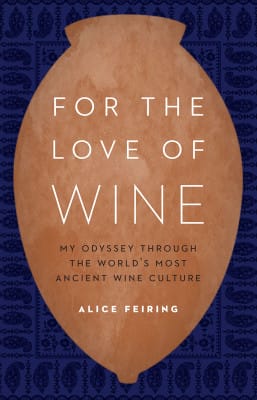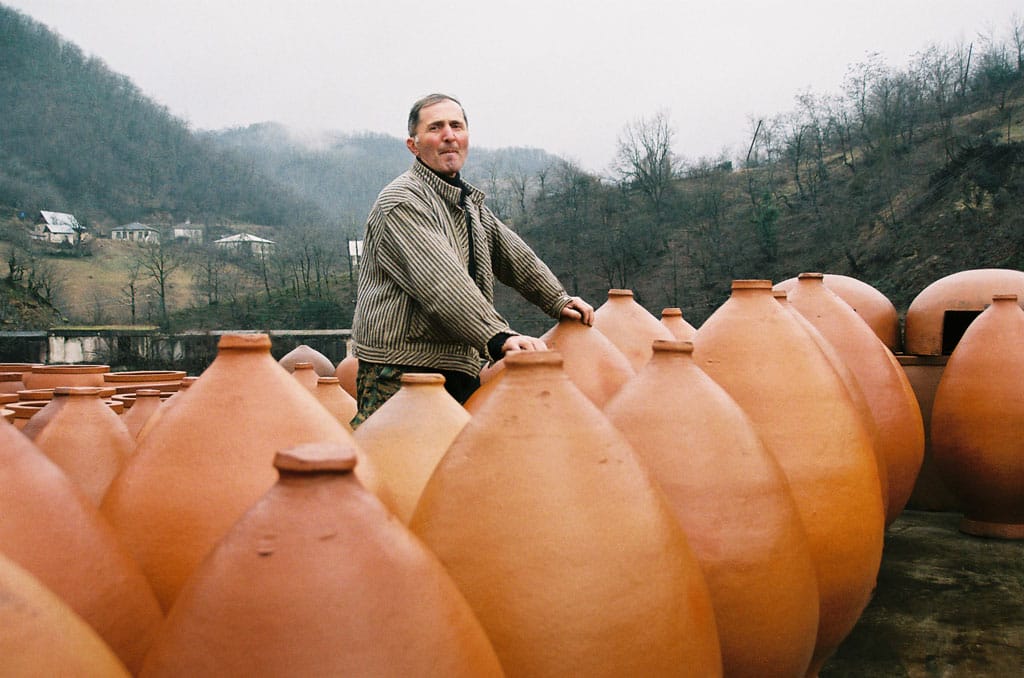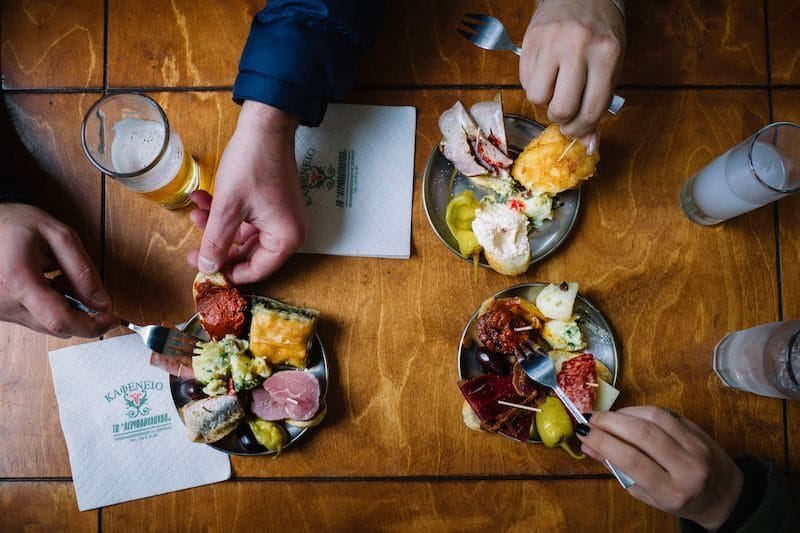Editor’s note: In the latest installment in our Book Club series, we spoke to Alice Feiring, author of For the Love of Wine: My Odyssey through the World’s Most Ancient Wine Culture (Potomac Books, 2016). She is the author of two other books, publishes the newsletter The Feiring Line, has written for numerous publications and has received a James Beard Award for her writing.
How did this book come about?
Amazingly, the Georgian government asked me for an “Alice kind of book” that they could use promotionally. It was a small, no-strings-attached, rambling essay on Georgian wine. I realized I had written a book proposal, so I developed the idea and took it from there.
In the introduction, you describe Georgia as a “country that seems to run with and on wine….Wine is the Georgians’ poetry and their folklore, their religion and their daily bread.” How did you see that being expressed during your travels in Georgia?
 Take this for example. I was waiting for a callback from a winemaker in the rural area of Racha. My car was outside of a residence. The gate to the property had grape ornamentation. The owner of the house came out. He asked me what was wrong. He heard my plight. He said, “You want wine? I have wine!” He wasn’t a commercial winemaker, but he took me into his house and into his marani and shared his home brew with me. This is not uncommon.
Take this for example. I was waiting for a callback from a winemaker in the rural area of Racha. My car was outside of a residence. The gate to the property had grape ornamentation. The owner of the house came out. He asked me what was wrong. He heard my plight. He said, “You want wine? I have wine!” He wasn’t a commercial winemaker, but he took me into his house and into his marani and shared his home brew with me. This is not uncommon.
There is no meal or reference without wine. On Saint Nino’s day, the streets are filled with people having received their “sacrament,” a grape vine. The tamada, the toastmaster, reigns over the table; a tamada is impossible without wine, they are intrinsically linked, and the tamada is the philosopher, the poet. The way they talk about the wine – “it stays in the qvevri for 9 months, just like a mother and the child in her uterus” – the symbology goes on and on.
How does Georgians’ relationship to wine and winemaking compare to that in some other classic “Old World” winemaking countries, like France and Italy?
There is a deep attachment to purity and simplicity that comes out of their culture and religion. There is a minimum of ego, even as there is pride. This is a major point of separation.
You write about Georgians’ continuing use of the earthenware qvevri to make their wine — why do you think this winemaking tradition has held on there and what does it say about Georgian winemaking culture?
There has been a dalliance with wood. Wood barrels came into the country, as far as I can see, back in the late 1800s. Some still do use it, but the qvevri has never left. Why? For one it might be that the Georgians are extremely practical, if it ain’t broke, don’t fix it.
In one chapter, you write about pouring a glass of a favorite Georgian qvevri wine for the wine director of Le Bernardin, who was not particularly taken by it. How do you explain Georgian “natural” wine to those unfamiliar with it, and is there something of a learning curve for those used to drinking barrel-aged wines?
 The issue is more for white wine that looks amber colored and a white wine with tannin, that grit that sometimes you get on a red wine, which comes from the skin contact and white grapes can get up to eight months of it. But what I do tell people is to suspend what they know of white wine. Be prepared and open their hearts to a new vision where there are more savory and floral qualities than fruit. When they know not to expect grapefruit or mango from the wine, they can be charmed.
The issue is more for white wine that looks amber colored and a white wine with tannin, that grit that sometimes you get on a red wine, which comes from the skin contact and white grapes can get up to eight months of it. But what I do tell people is to suspend what they know of white wine. Be prepared and open their hearts to a new vision where there are more savory and floral qualities than fruit. When they know not to expect grapefruit or mango from the wine, they can be charmed.
One of the concerns you write about in your book is that Georgian winemakers might be pushed towards mainstreaming their wines for the global market. Is that happening or are Georgian winemakers able to stay true to their country’s winemaking traditions?
Since the explosion of the naturals in the country, even the conventional producers have added an organic and a qvevri line. Where the qvevri makers were going out of business, they now have waiting lists. I think they’re safe.
Finally, can you recommend some good bottles that are obtainable in wine stores outside of Georgia and that would serve as a good introduction to Georgian wines?
The 2014 and 2015 Pheasant’s Tears are delicious and there’s a good chance of finding them. Gotsa and Iago’s Wine also has decent distribution. The two most readily available wines are the rkatsiteli (for white or orange) and saperavi (full bodied red). But also look for wines made from chinuri, mtsvane and tsolikouri grapes.
Published on May 07, 2016
Related stories
February 19, 2015
ShanghaiOn one of Shanghai’s busiest shopping streets, amidst the glittering Tiffany & Co, Piaget and Apple stores, Guang Ming Cun is housed in a nondescript four-story building. Glass displays in front offer a glimpse of the braised and dried meats for sale, and around the side you can peek in to watch flaky meat pastries…
May 23, 2013
AthensEditor’s note: This is the fourth installment in our street food series this week, featuring dispatches on the best streetside eating in all the cities Culinary Backstreets covers. Before we get down to the business of discussing the best of Athens’ street food, a disclaimer: Athens is at a disadvantage when it comes to streetside…
May 13, 2021
AthensQuick bite: On this food tour in Plaka, we will explore the district's culinary diamonds in the touristy rough while at the same time getting a sense of how this ancient district shaped the growth of modern Athens. The historic Plaka district might be one of Athens’ most popular tourist destinations, but there’s another part…


















































































